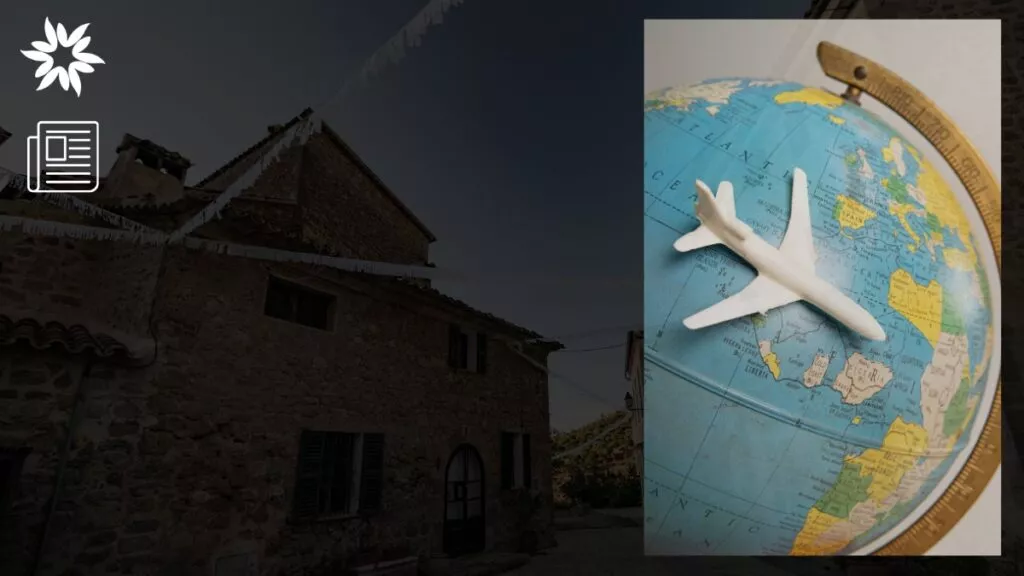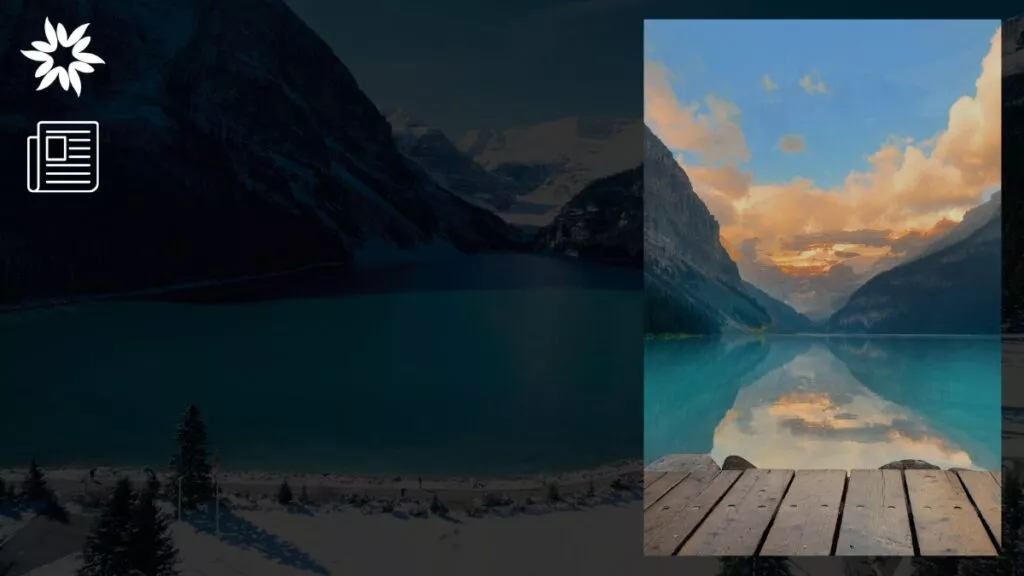When I started traveling, I didn’t expect to find so many places that completely took my breath away. But as I visited more national parks, plenty stood out with their landscapes, wildlife, and unforgettable moments. In the best way, they felt different—bigger, wilder, and more powerful than anything I had seen before.
In this guide, I’m sharing the 10 most beautiful national parks I’ve visited. I’ll explain what makes each one special, where to go, and what to look for based on my own experience.
Let’s start from the top.
1. Khao Sok National Park – Surat Thani, Thailand
Established: 1980
Size: 739 square kilometers
Location: Southern Thailand, near Surat Thani and Khao Lak
Best time to visit: December to April (dry season)
Khao Sok National Park, located in southern Thailand’s Surat Thani province, is one of the oldest evergreen rainforests in the world—scientists say it’s older than the Amazon. Right away, the limestone cliffs got my attention. The sharp karsts shoot straight up from Cheow Lan Lake, creating views that look like scenes from a fantasy movie.
Cheow Lan Lake itself is man-made, formed in 1987 after the construction of the Ratchaprapha Dam. But it blends into the natural environment so perfectly, it feels ancient. I stayed in a floating bungalow on the lake, and it was one of the most peaceful nights I’ve ever had. At sunrise, the lake was like glass.
Khao Sok is home to elephants, gibbons, hornbills, and even the rare rafflesia flower—the one that can grow up to a meter wide and smells awful. Night hikes showed me bioluminescent fungi glowing faintly under the trees. Local guides led us into caves like Nam Talu, where we waded through chest-high water in complete darkness. It was intense but worth it.
2. Banff National Park – Alberta, Canada
Established: 1885 (Canada’s first national park)
Size: 6,641 square kilometers
Location: Alberta, Canadian Rockies
Best time to visit: June to September for hiking, December to March for winter sports
Banff National Park is Canada’s first national park, created in 1885. It’s in Alberta, right in the heart of the Canadian Rockies. The two lakes that everyone comes to see are Lake Louise and Moraine Lake, both famous for their turquoise waters. If you’ve ever wondered why some lakes can be turquoise, it’s due to the rock flour from melting glaciers.
From the Banff Gondola, I got a 360-degree view of the surrounding mountains from the top of Sulphur Mountain. One hike that stood out was the Plain of Six Glaciers Trail. It was long, but the views of the glaciers and cliffs made it unforgettable. I spotted grizzly bears, elk, and mountain goats during my stay.
Winter in Banff is like another world. Snow covers everything, and it turns into a skiing and snowboarding hub. The highlight for me was watching the northern lights one night—green streaks across a clear, freezing sky.
3. Serengeti National Park – Tanzania
Established: 1951
Size: 14,763 square kilometers
Location: Northern Tanzania, bordering Kenya’s Maasai Mara
Best time to visit: June to October (dry season and Great Migration)
Serengeti National Park is in northern Tanzania and spans about 14,763 square kilometers. It’s known best for the Great Migration, which happens every year when around 2 million wildebeests, zebras, and gazelles move through the plains in search of fresh grass.
I was there during the migration, and the scale of it is hard to describe. The animals stretch from one end of the horizon to the other, and with them come lions, hyenas, and crocodiles waiting at the rivers. I would go as far as to say it felt like I was watching a live wildlife documentary.
Besides the migration, the park is famous for having all of the Big Five: lions, leopards, elephants, rhinos, and buffalo. I even took a hot air balloon ride at sunrise and watched the herds from above. It’s something I think everyone should do at least once.
The Maasai people live around the park, and visiting one of their villages gave me a better understanding of how deeply tied their lives are to the land.
4. Fiordland National Park – South Island, New Zealand
Established: 1952
Size: 12,607 square kilometers (the largest park in New Zealand)
Location: Southwestern corner of South Island
Best time to visit: November to April (summer and clearer weather)
Fiordland is the largest national park in New Zealand, located in the southwest of the South Island. It’s known for fjords—Milford Sound and Doubtful Sound being the most famous. These are deep valleys carved by glaciers and now filled with seawater.
Milford Sound is the more accessible one. I took a boat ride through it and was surrounded by cliffs that rise over 1,200 meters straight from the water. Waterfalls like Stirling Falls plunge down the cliffs and sometimes even disappear into mist before hitting the sea.
The Kepler Track, one of New Zealand’s Great Walks, was a challenge but gave me insane views from the ridgelines. The weather can change fast, though. One moment it was sunny, the next I was hiking through clouds.
Fiordland is also home to the rare Fiordland crested penguin and the kea, a clever alpine parrot that’s known for trying to steal snacks from hikers.
5. Torres del Paine National Park – Patagonia, Chile
Established: 1959
Size: 242,242 hectares
Location: Southern Chile, near Puerto Natales|
Best time to visit: November to March (Patagonian summer)
Torres del Paine is in southern Chilean Patagonia, covering more than 240,000 hectares. Its most famous landmarks are the three granite spires called the Torres—each over 2,800 meters tall.
The W Trek is the most popular multi-day hike. It covers around 80 kilometers and takes you through valleys, around lakes, and up to glaciers. I hiked it in five days, staying in mountain huts called refugios.
Glacier Grey was unforgettable. It feeds into Lake Grey, where massive chunks of ice float silently across the water. One evening, I saw a rainbow stretch across the lake while the ice glowed in the sunset.
The weather changes constantly. I’d wear a T-shirt one hour, and a winter coat the next. But the payoff is views that feel like you’ve reached the edge of the Earth.
6. Yosemite National Park – California, USA
Established: 1890
Size: 3,028 square kilometers
Location: Sierra Nevada mountains, eastern California
Best time to visit: May to October (for waterfalls and hikes)
Yosemite is located in central California and was established as a national park in 1890. It covers nearly 3,080 square kilometers, and most visitors go straight to Yosemite Valley. That’s where you see El Capitan, Half Dome, and Yosemite Falls—all in one spot.
El Capitan rises over 900 meters from the valley floor. I’m not a climber, but watching people scale its vertical face was wild. Yosemite Falls is one of the tallest in North America at 739 meters.
I hiked the Mist Trail, which leads to Vernal and Nevada Falls. As the name suggests, you get soaked, but the views are worth it. Mariposa Grove, where giant sequoias grow, felt like walking through time. Some of those trees are over 2,000 years old.
In winter, the crowds thin out, and the whole park becomes quiet and snow-covered. Glacier Point gives a perfect view of the valley, especially at sunset.
7. Kruger National Park – Mpumalanga & Limpopo, South Africa
Established: 1926
Size: 19,485 square kilometers
Location: Northeast South Africa, near Mozambique border
Best time to visit: May to September (dry season and easier animal spotting)
Kruger is one of Africa’s biggest game reserves, covering almost 20,000 square kilometers in northeastern South Africa. It’s one of the best places to see the Big Five, and the roads are good enough for self-driving safaris, which is rare.
I joined several guided game drives and saw lions napping under acacia trees, elephants crossing the road, and even a leopard dragging prey up a tree. The rangers knew everything—tracking footprints, explaining animal behavior, even pointing out birds I never would’ve noticed.
At night, the sounds of the bush were loud—crickets, hyenas, distant lion roars. I also did a walking safari where we followed animal tracks and learned how to stay safe on foot in lion territory. It was one of the most exciting things I’ve done, hands down.
8. Plitvice Lakes National Park – Croatia
Established: 1949
Size: 296 square kilometers
Location: Central Croatia, between Zagreb and Zadar
Best time to visit: May to October for hiking; winter for snowy landscapes
Plitvice Lakes is Croatia’s oldest and largest national park, and it’s a UNESCO World Heritage Site. It’s best known for its 16 terraced lakes, connected by waterfalls and set within a forested canyon.
The color of the water changes depending on the minerals, sunlight, and organisms in the lakes, ranging from deep green to electric blue. Wooden boardwalks take you right over the water, and everywhere you turn, there’s another waterfall.
In total, there are over 90 waterfalls in the park. I visited in the fall, and the mix of red, orange, and gold leaves reflected in the water made it feel unreal.
Boats and shuttles are included in the ticket price and help you move between the upper and lower lakes.
9. Sagarmatha National Park – Solukhumbu District, Nepal
Established: 1976
Size: 1,148 square kilometers
Location: Eastern Nepal, around Mount Everest
Best time to visit: March to May or October to early December
Sagarmatha is home to Mount Everest and lies in northeastern Nepal. It was established in 1976 and is a UNESCO World Heritage Site. The park covers over 1,148 square kilometers of rugged Himalayan terrain.
I didn’t climb Everest, but I did trek to Everest Base Camp. It’s a 12-day round trip, but every part of the trail had something amazing.
At Namche Bazaar, a village at 3,440 meters, I stayed in a teahouse run by a Sherpa family. The warmth of the people there matched the cold air outside.
Tengboche Monastery sits at 3,867 meters and offers not only a place to rest but also one of the best views of Everest. The sound of monks chanting in the early morning felt like something from another time.
Prayer flags line the trails, and yaks carry supplies past hikers. I even saw Himalayan tahr and colorful Danphe birds—the national bird of Nepal.
10. Zhangjiajie National Forest Park – Hunan Province, China
Established: 1982
Size: 481 square kilometers
Location: Wulingyuan Scenic Area, Hunan, central China
Best time to visit: April to October
Zhangjiajie is in Hunan Province, China, and it’s famous for its pillar-like rock formations. Some of them rise over 200 meters and are covered in mist. This park was the inspiration for the floating mountains in Avatar, and it really does feel like something out of a movie.
I took the Bailong Elevator, the world’s tallest outdoor lift, up the side of a cliff. From there, I walked on the glass bridge suspended over a canyon—terrifying but amazing.
Tianzi Mountain has one of the best viewpoints. The landscape looks endless, like a sea of stone towers. Golden Whip Stream, on the other hand, is calm and peaceful—perfect for an easier walk.
Macaques roam freely here, and I had to hold on to my snacks tightly. Cable cars take you up and over the misty valleys for incredible views.
It’s Time to See These Natural Wonders for Yourself
One thing I’ve never regretted is choosing to explore the beautiful national parks we’ve covered today. Every sunrise in the mountains, every sound of wildlife in the distance, every step through a place untouched by time—it all changed the way I see the world.
Just don’t let money, fear, or routine hold you back. Travel smart, save where you can, and remember that the best views in life often come after the hardest climbs.
Life is short, and these parks reminded me how wide and wild it really is. Pick one, start planning, and give yourself something real to remember. You deserve to see it for yourself.








